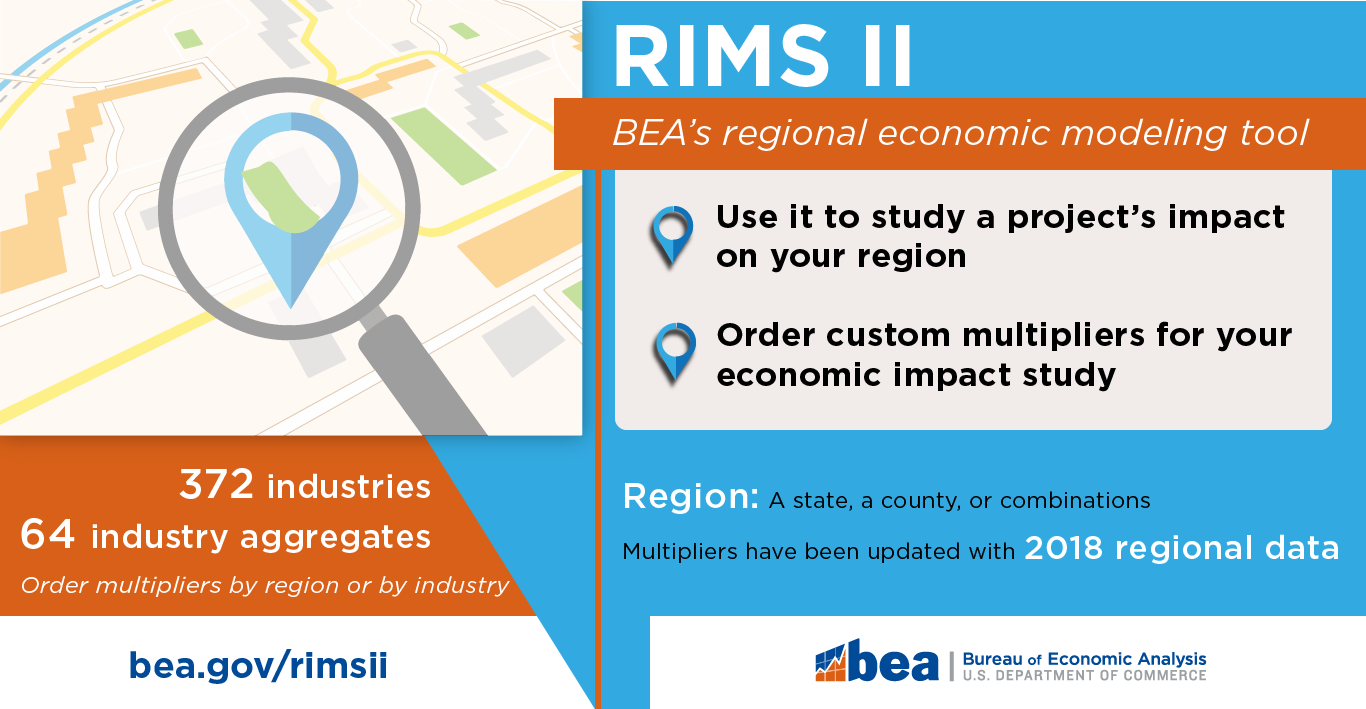Updated data are now available in BEA’s economic modeling tool used to estimate the impact of new projects or other changes in a region’s economy.
Regional planners, local officials, and investors typically use the Regional Input-Output Modeling System, or RIMS II, to assess how projects such as a new factory or the expansion of a university will ripple through an economy. RIMS II has also been used to estimate the economic impact of natural or man-made disasters, in cases where the basic structure of the local economy remained intact.
RIMS II has limitations in cases of economic instability, such as during the COVID-19 pandemic. That’s because the model’s assumptions about how a region’s businesses and households operate and the goods and services they purchase are based on a stable economy. Despite these limitations, RIMS II can be used to estimate some pandemic impacts, such as how a hotel’s loss of guests or an airline’s reduction in flights will affect that business’s suppliers.
For more about potential uses and limitations of RIMS II in relation to the pandemic, read “Uses of RIMS II Multipliers—COVID-19” on bea.gov.
BEA uses a county, state, or region’s economic relationships to calculate RIMS II “multipliers.” Using these multipliers, you can estimate a project or economic event’s impact on the area’s total gross output (sales), value added (gross domestic product), earnings, and employment. For example, building a new road requires construction work and increased production of asphalt and concrete, and people employed to do these jobs spend money at area businesses.
Multipliers are available down to the county level for 372 detailed industries or 64 aggregate industries. To reflect the latest data available, the multipliers were updated in June with BEA’s 2018 regional data. RIMS II continues to use the most recent industry relationships, from the 2012 national benchmark supply-use tables.
You can order multipliers by region, which will include all industries in the model for that region, or by industry, including multipliers for all 50 states and the District of Columbia. Because the RIMS II model is customized for each customer’s needs, there is a processing fee.
For more information, please visit the RIMS II website at bea.gov/rimsii or contact the RIMS II staff at rims@bea.gov.
